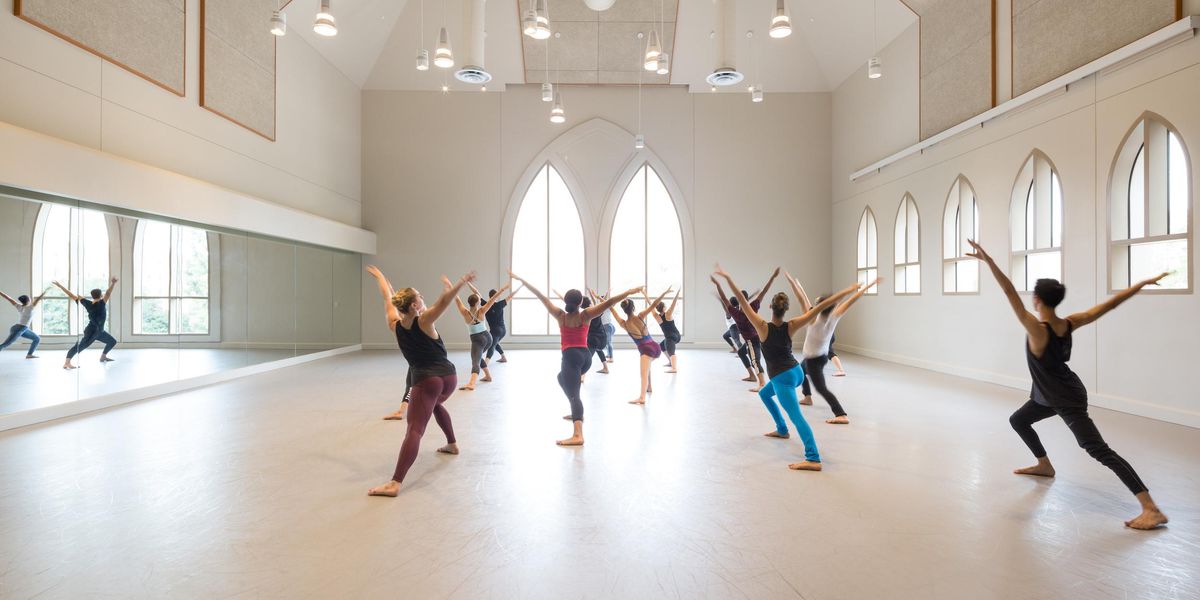A Hundred Years Ago—Like Yesterday
One hundred years ago today, the Parisian audience rose up in protest when they saw and heard the Stravinsky/Nijinsky Sacre du Printemps at the Théâtre des Champs-Elysées. Onstage, huddled groups stomped with turned-in feet to insistent, brash, rhythms, agitating viewers to the point of mayhem. The ballet accomplished what Diaghilev wanted the Ballets Russes to do: astonish the audience.
A poster announcing Ballets Russes’ 1913 season, which I saw hanging in the lobby of the Théâtre des Champs-Elysées last December.
That evening of May 29, 1913 rudely broke from artistic convention; it was just such breaks that led to modernism. Ever since, choreographers have tried to scale the jagged heights of Stravinsky’s music. In tribute to the 100th anniversary, companies from the Bolshoi to Houston Ballet to Bill T. Jones to San Francisco Ballet are presenting new versions of The Rite of Spring this spring.
At Dance Magazine, we marked the centennial with a photo essay, “After the Revolution,” in the February issue. By just glancing at these pages, you can glean something about the public riot at the Théâtre des Champs Elysées and how choreographers have jumped to the challenge of Stravinsky’s music.
Diaghilev’s Ballets Russes in Vaslav Nijinsky’s original Sacre du Printemps (1913). Photo from the Dance Magazine Archives.
I recently had an experience that seemed to collapse the past century into a few words. The British choreographer Richard Alston dropped by to shoot a “Choreography in Focus,” and he happened to take a quick look at our photo essay. Seeing the picture of the original cast of 1913 Sacre, he pointed to the dancer second from the left and chirped, “Oh, that’s Mim.” I knew he meant Marie Rambert, who had been hired by Diaghilev to help Nijinsky and the dancers count the diabolically irregular measures of Stravinsky’s music. She later formed her own company in England, which was taken over by Richard Alston in the 1980s. (She was quite elderly by then). When I realized that he had actually known her and worked with her, I felt I could touch that time in 1913.
The people who really are in touch with the original Sacre are Millicent Hodson and Kenneth Archer. For about 40 years they have been researching and reconstructing the work of Nijinsky and Roerich. When they first reconstructed Sacre for the Joffrey in 1987, the piece was such a powerful revelation that I saw it three times. Primitive, wildly colorful, and unpredictable in its rhythms and groupings, it took a pagan community through a shattering ritual. The audience riot is history, but this reconstruction is a churning, bracing, beautiful work of art—no matter how “authentic” it is or isn’t.
Note on photos: the above photo shows six of the dancers in the original Sacre du Printemps, but the backdrop is merely the wallpaper of a room near the stage. It is not the actual, very trippy Roerich backdrop for the original ballet. The photo below is of one of the posters in the current exhibit Diaghilev and the Ballets Russes 1909-1929: When Art Danced with Music at the National Gallery of Art in Washington, DC. It depicts Nijinsky in Fokine’s Spectre de la Rose with design by Bakst. This was one of the roles Nijinsky was rebelling against when he choreographed Sacre.
Jean Cocteau’s poster of Vaslav Nijinsky in
Le Spectre de la Rose
for the opening season of the Ballets Russes at the The�âtre des Champs-E�lyse�es, Paris in 1913. Photo courtesy V&A, London, Gift of Mademoiselle Lucienne Astruc and Richard Buckle in memory of the collaboration between Diaghilev and Gabriel Astruc.




